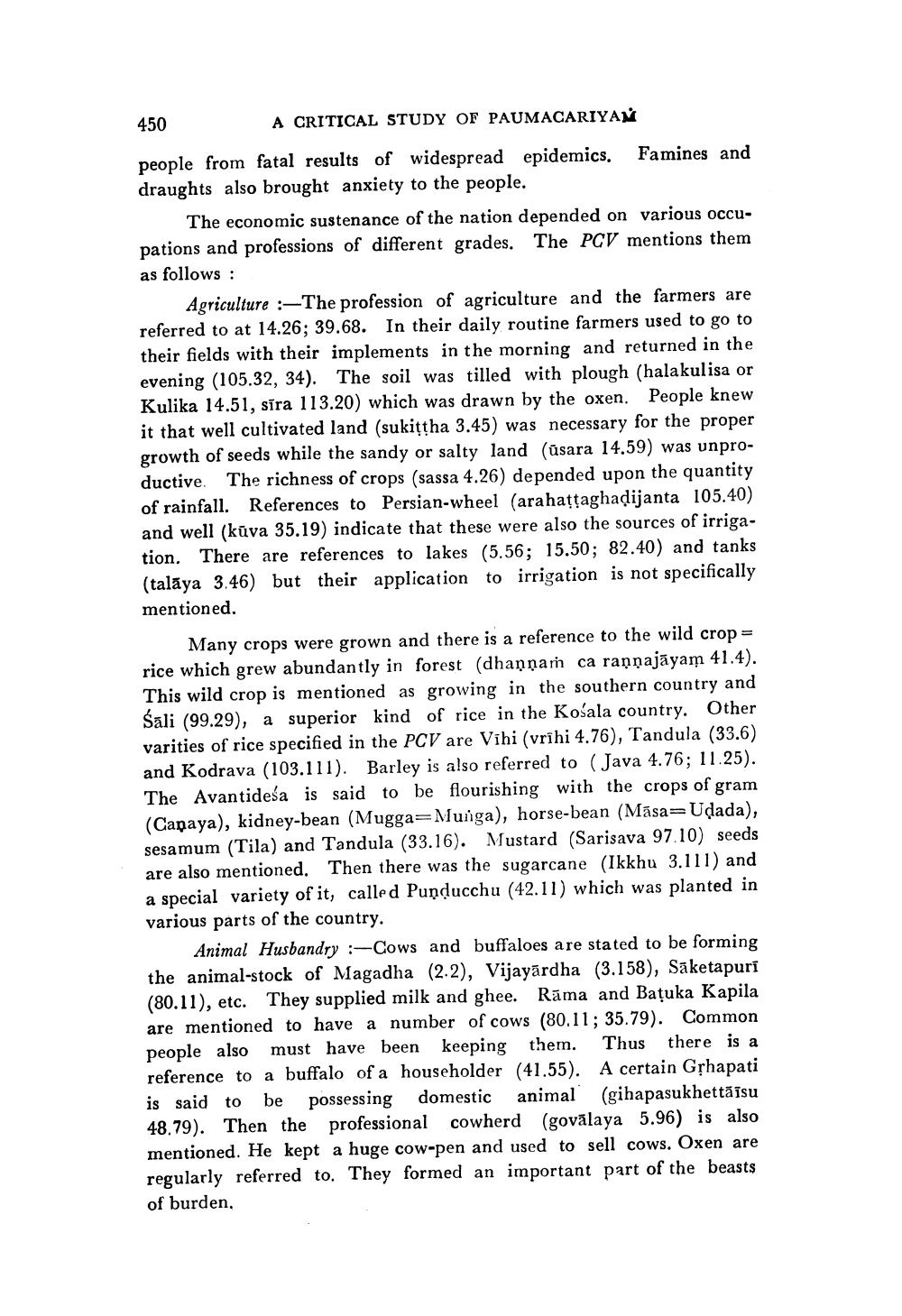________________
450
A CRITICAL STUDY OF PAUMACARIYAM
people from fatal results of widespread epidemics. draughts also brought anxiety to the people.
Famines and
The economic sustenance of the nation depended on various occupations and professions of different grades. The PCV mentions them as follows:
Agriculture :-The profession of agriculture and the farmers are referred to at 14.26; 39.68. In their daily routine farmers used to go to their fields with their implements in the morning and returned in the evening (105.32, 34). The soil was tilled with plough (halakulisa or Kulika 14.51, sīra 113.20) which was drawn by the oxen. People knew it that well cultivated land (sukitṭṭha 3.45) was necessary for the proper growth of seeds while the sandy or salty land (usara 14.59) was unproductive. The richness of crops (sassa 4.26) depended upon the quantity of rainfall. References to Persian-wheel (arahaṭṭaghadijanta 105.40) and well (kuva 35.19) indicate that these were also the sources of irrigation. There are references to lakes (5.56; 15.50; 82.40) and tanks (talaya 3.46) but their application to irrigation is not specifically mentioned.
Many crops were grown and there is a reference to the wild crop = rice which grew abundantly in forest (dhannam ca ranṇajayam 41.4). This wild crop is mentioned as growing in the southern country and Śali (99.29), a superior kind of rice in the Kosala country. Other varities of rice specified in the PCV are Vihi (vrihi 4.76), Tandula (33.6) and Kodrava (103.111). Barley is also referred to (Java 4.76; 11.25). The Avantideśa is said to be flourishing with the crops of gram (Capaya), kidney-bean (Mugga-Munga), horse-bean (Masa-Udada), sesamum (Tila) and Tandula (33.16). Mustard (Sarisava 97.10) seeds are also mentioned. Then there was the sugarcane (Ikkhu 3.111) and a special variety of it, called Punducchu (42.11) which was planted in various parts of the country.
Animal Husbandry :-Cows and buffaloes are stated to be forming the animal-stock of Magadha (2.2), Vijayardha (3.158), Saketapurī (80.11), etc. They supplied milk and ghee. Rama and Baṭuka Kapila are mentioned to have a number of cows (80.11; 35.79). Common Thus there is a people also must have been keeping them. reference to a buffalo of a householder (41.55). A certain Gṛhapati is said to be possessing domestic animal (gihapasukhettāīsu 48.79). Then the professional cowherd (govalaya 5.96) is also mentioned. He kept a huge cow-pen and used to sell cows. Oxen are regularly referred to. They formed an important part of the beasts of burden,




